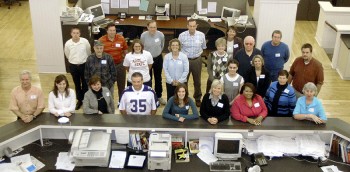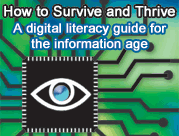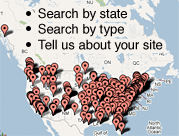![]()
Contact:
(JavaScript must be enabled to view this email address), News Director for 6News
![]()
- Aug. 25: The Value of Rural News
- Jun. 19: CNN’s iReport Sees Iran Growth
- May. 25: ProPublica calls upon CitJ’s
In Kansas, Opening the Newsroom Doors to Citizen Journalists
![]()
The Citizen Journalism Academy, Lawrence, Kansas
Organized by the World Company, publisher of the daily Lawrence Journal-World, and the William Allen White School of Journalism and Mass Communications at the University of Kansas
![]()
The Idea:
Following the model of law enforcement citizen academies that offer residents a better understanding of policing, senior news managers at the World Company and leaders at the University of Kansas journalism school decided in August 2006 to design a series of seminars that would offer interested citizens a first-hand taste of the news business.
Cody Howard, news director for 6News, the video arm of the World’s converged newsroom in Lawrence, said the goal was not necessarily to recruit people to contribute to the World Company’s print or electronic products. But new technologies make it “easier for people to do that now than ever before,” Howard said. “People are learning more and more how to do that kind of thing and leaning more and more toward producing their own content.”

Members of the inaugural Citizen Journalism Academy in the Lawrence Journal-World newsroom. Photo by Richard Gwin.
He added: “We felt like people are interested anyway, so we figured that we wanted to give people the tools that they needed, and let them know the ground rules, and the expectations, and how to do it.”
The Training:
Academy “fellows” met for two hours each Monday in October 2006 at the Journal-World newsroom. Howard and Kansas Journalism Dean Ann Brill led the academy. Other newsroom managers and journalism faculty also took turns leading seminars that followed this outline:
- Week One: Introductions. What is journalism? What journalists do, and why.
- Week Two: Basic reporting. Where do story ideas come from? Tips on interview questions. Fellows were assigned to find a story from their neighborhood or community.
- Week Three: Ethics. How do newsrooms handle sensitive, graphic or inflammatory coverage? Fellows were given a series of ethical issues that the newsroom had faced and asked how they would respond.
- Week Four: The editorial process. How the news product comes together. Fellows were given 10 stories, and asked where they would you run different items in the newspaper?
- Week Five: Graduation. How citizen journalists can participate.
Academy organizers also set up a restricted access web site for the participants to read and critique one another’s work, and they set aside time for one-on-one coaching and feedback.
The complete syllabus can be viewed here.
The Recruits:
To recruit participants, organizers ran advertisements in the Journal-World, online and on air. Howard said the response was overwhelming. Organizers received 126 applications, with each applicant submitting a brief biography and explaining why they wanted to participate.
News executives and journalism faculty selected a class of 25; 23 people attended and 22 people completed all five weeks. “It was all over the chart. We had people from [ages] 17 to 72 in the academy,” Howard said. “We had a senior in high school who was the editor of one of the high school newspapers in town, to a gentleman who was retired for several years, who was 72.”
At least a half dozen of the participants have since contributed reporting and content to the Journal World or its web site and have indicated they want to continue. Four members of the first class will serve on an advisory board to help plan the next academy session, expected to be held in spring 2007.
The Results:
When some of the fellows asked why the Journal-World hadn’t written anything about the academy, the newspaper’s managing editor assigned one of the newly-minted citizen journalists to write the story herself. It appeared in the Journal-World’s features section the Saturday after class graduation. You can read the story here.
Academy members have been tapped for other assignments as well. For the newspaper’s coverage of post-Thanksgiving shopping on “Black Friday,” several academy members contributed information from their own shopping rounds. On Election Day, several correspondents agreed to file short reports from their community polling stations.
“Normally, we’ve got one or two reporters out at one or two polling places,” Howard said. “This way, we’ve got six or seven people out at six or seven different polling places. Even if its just two or three paragraphs, you put it all together, and you’ve got a lot of information there.”
PREV: In Idaho, Radio Powered by Citizen Journalism
NEXT: In Kentucky, Boosting Local Coverage with Radio Recruits





Comments
Wow super site! Thanks :) I have you bookmarked now.